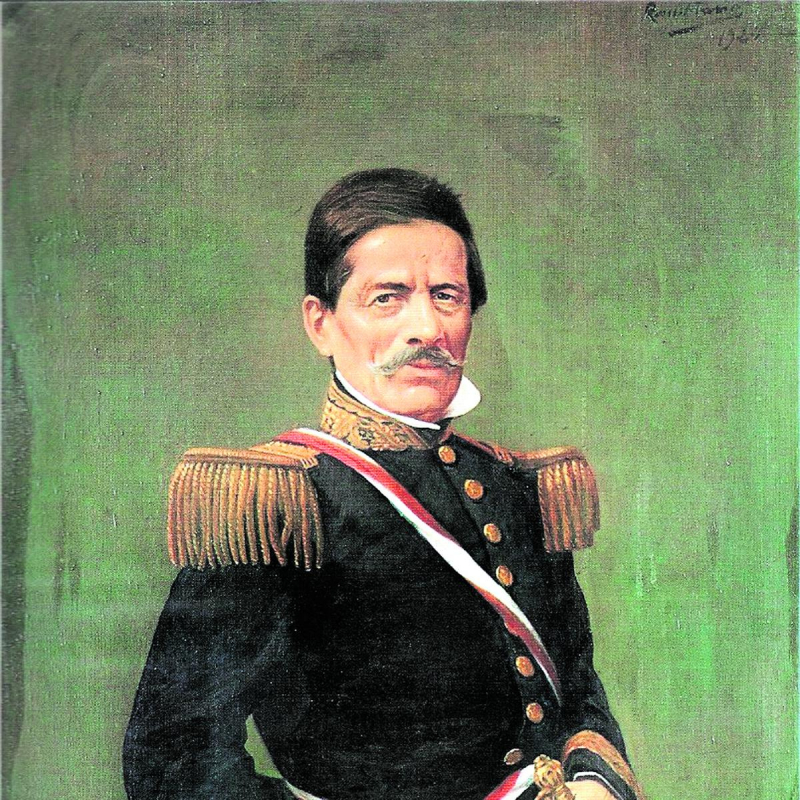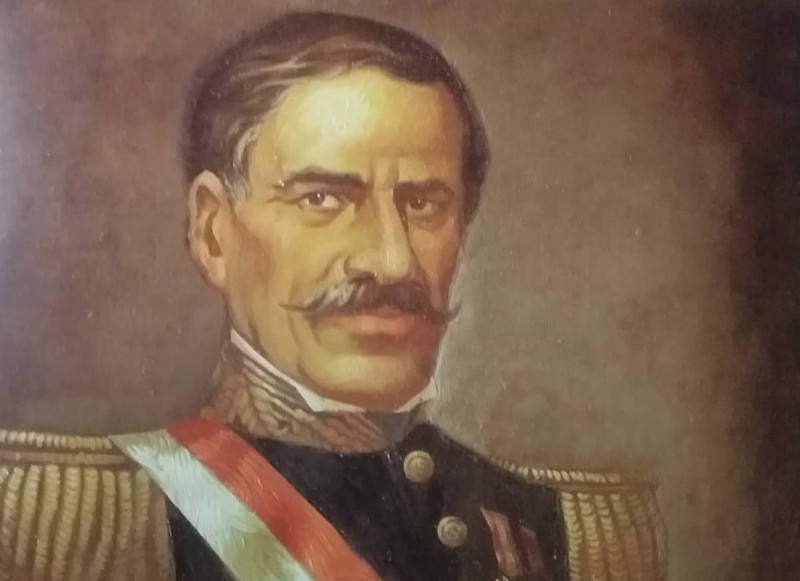Ramón Castilla
Ramón Castilla y Marquesado (31 August 1797 - 30 May 1867) was a Peruvian caudillo who served as Peruvian President three times, as well as Interim President of Peru (Revolution Self-proclaimed President) in 1863. His first notable appearance in Peruvian history was as a commanding officer in the army of the Libertadores, which helped Peru gain independence. Later, when the economy boomed due to the exploitation of guano deposits, he led the country. The governments of Castilla are remembered for abolishing slavery and modernizing the state.
He took over the presidency for the first time after General Domingo Nieto's death in 1844, then again in 1845 until 1851, again from 1855 to 1862, and finally for a brief period in 1863.
Castilla won the Peruvian presidential elections in 1845 and took office in April of that year. The guano export boom was rapidly expanding at the time, owing largely to treaties signed with the British company Antony Gibbs, which had commercialized guano in Europe. Important urban projects began during this time period as well, such as the first railroad from Lima to Callao, which aided in the transportation of guano from production centers to export destinations.
Castilla was deposed after six years in power by José Rufino Echenique. However, in 1854, Castilla led another rebellion in Peru's second-largest city, Arequipa, after being urged by other Peruvian liberals to aid in the abolition of slavery in the country.
On December 3, 1854, the city of Huancayo passed an abolition of slavery law. Castilla confronted and defeated Echenique in the Battle of La Palma on January 5, 1855, as this law was being enforced.
In 1859, Peru clashed with neighboring Ecuador over disputed territory along the Amazon River. Though Peru was considered successful, Castilla failed to secure a definitive agreement with Ecuador, and the issue would haunt both countries until the end of the twentieth century, when Peru and Ecuador signed the 1997 Peace and Border Treaty of Itamaraty in Brazil. During Castilla's presidency, a new constitution was enacted in December 1860, and it remained Peru's supreme law until 1920. Castilla's second presidency was thus marked by the liberation of slaves and indigenous Peruvians, as well as the establishment of a new postal system and a new constitution.
Miguel de San Román succeeded him in 1862, but died less than a year later. Castilla refused to recognize Pedro Diez Canseco, the Republic's Second Vice President and his brother-in-law, and claimed the presidency for himself. However, Juan Antonio Pezet succeeded Diez Canseco as interim president from April to August 1863. In 1864, he was President of the Senate .
Castilla condemned Pezet's international policies in 1864, only to be imprisoned and exiled to Gibraltar. During his absence, the historic Battle of Callao occurred, which became Spain's final and ultimately unsuccessful attempt to reclaim independent Peru.
He was deported to Chile again after returning to Peru, on the orders of then-President Mariano Ignacio Prado. Castilla, now nearly seventy, and a group of followers landed in Pisagua and proceeded towards the Tiviliche desert in a final attempt to reclaim power for the fifth time. This final attempt, however, proved fatal, and Castilla died on May 30, 1867, at Tiviliche, in his final attempt to pass through southern Peru.












